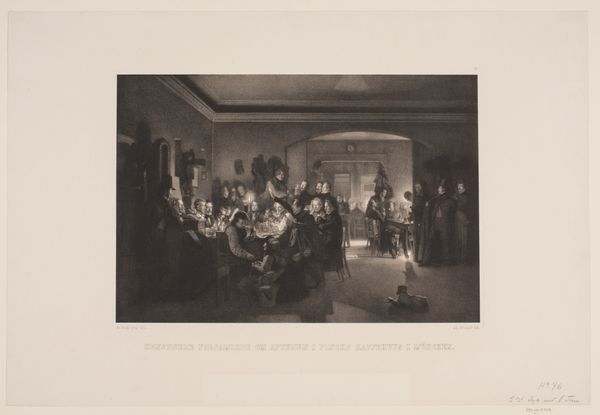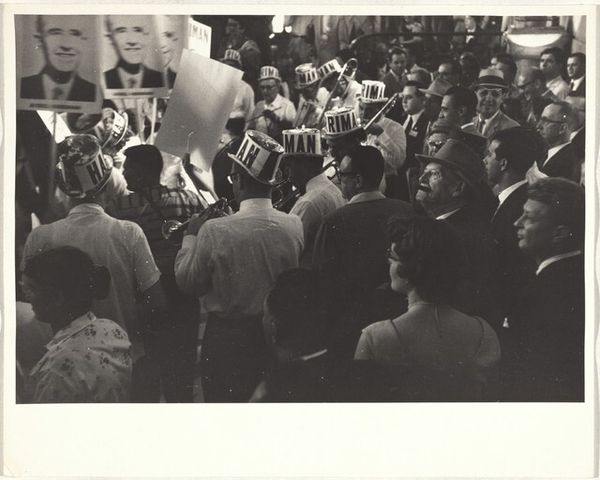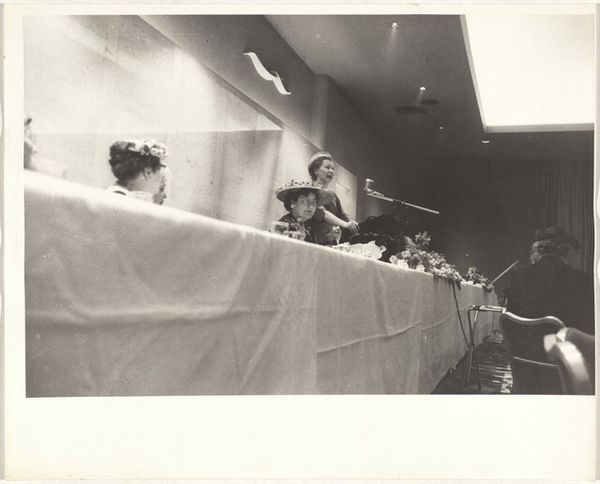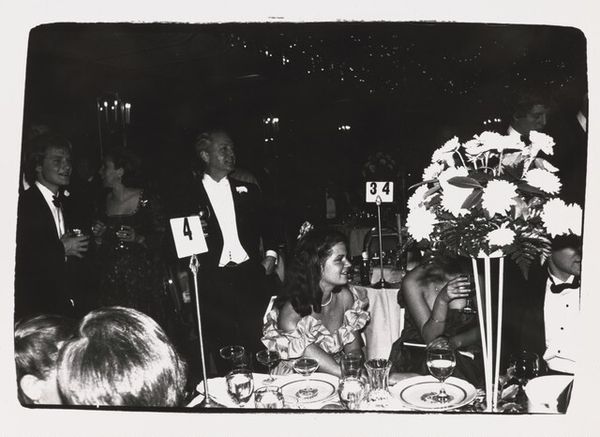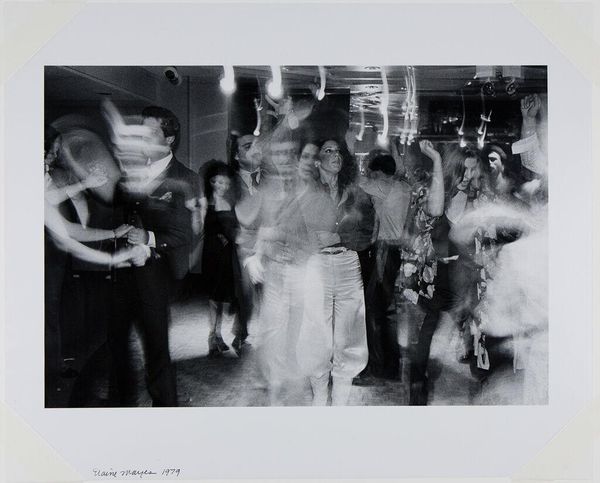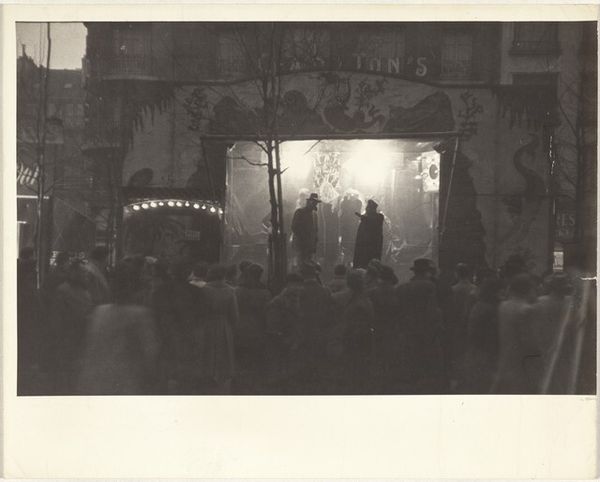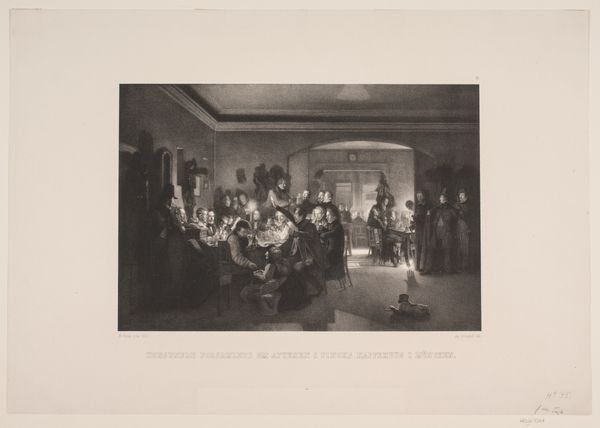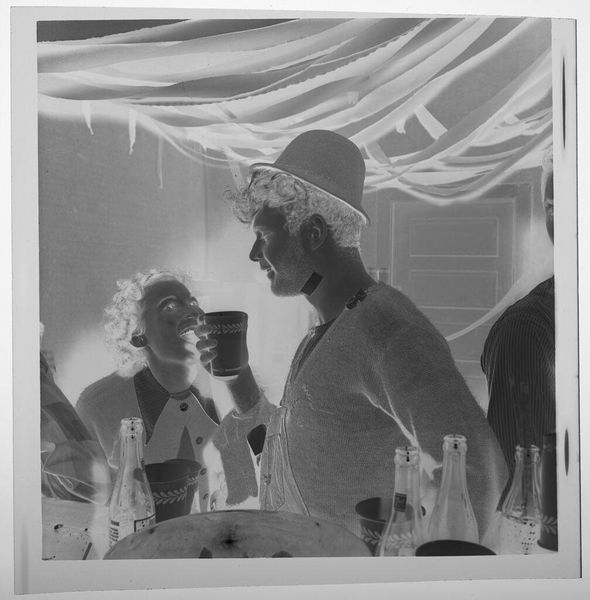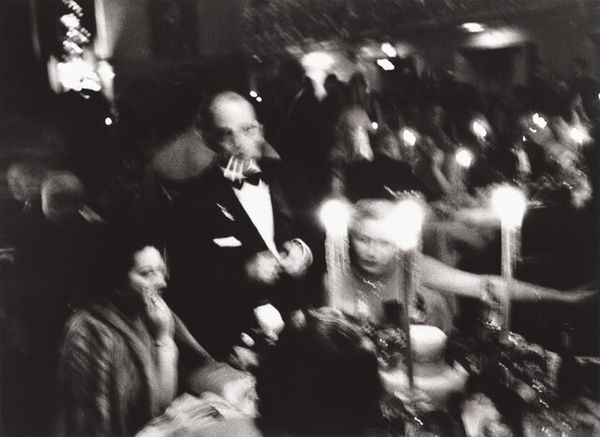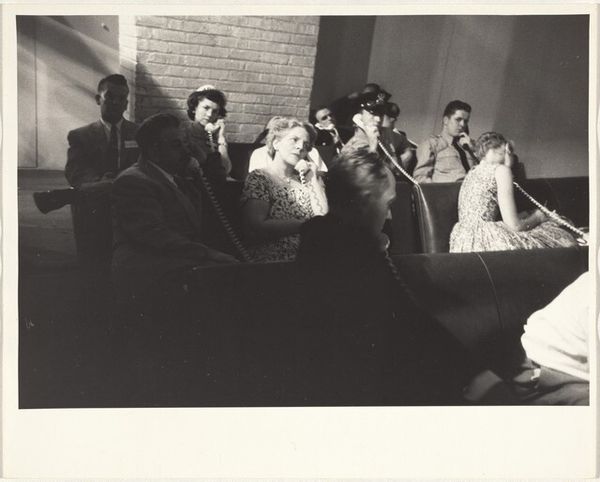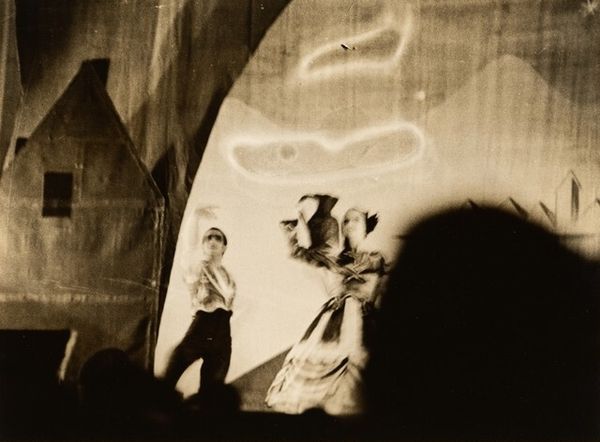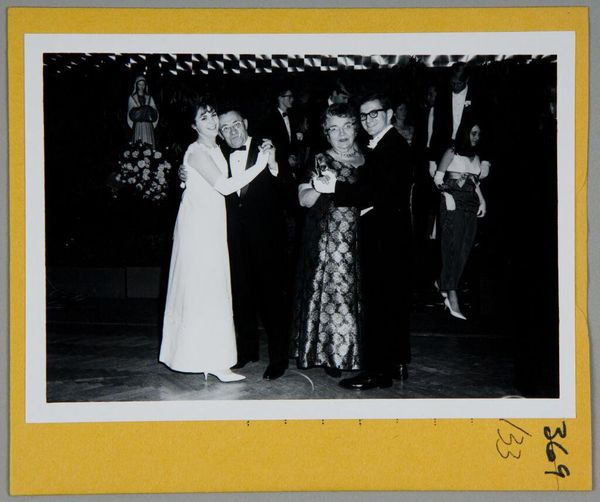
Dimensions: sheet: 20.3 x 25.3 cm (8 x 9 15/16 in.)
Copyright: National Gallery of Art: CC0 1.0
Curator: Robert Frank’s 1951 photograph, "Sideshow, Paris," offers us a glimpse into a small Parisian spectacle. What catches your eye first? Editor: The stark contrast. The deep shadows in the foreground swallowing the audience, juxtaposed with that almost blinding light illuminating the stage. It's immediately dramatic, theatrical. Curator: That’s a wonderful observation. Beyond the visual, the subject is itself pregnant with cultural symbols. Sideshows have always held a complex position in our collective consciousness—entertainment that skirts the edges of exploitation, often showcasing marginalized figures. The cut-out female forms, almost ghostly in the artificial light, what do they evoke for you? Editor: Those cut-outs… the light bleeds into their shapes, blurring their outlines. There’s a definite flattening, an objectification. It renders them less as individuals and more like… archetypes, perhaps. How might this resonate with broader societal views, then and now? Curator: The figure on the right, the man with the dark suit and dark round glasses, stands between reality and artifice. He seems to be an operator, in some senses a ringmaster who, as showman and master of ceremony, mediates the relationship with the public. Is the photograph as much about performance as it is about viewership? Editor: Yes, this brings forward what strikes me most: the ambiguous role of spectatorship itself. We’re implicated, aren't we? Our view mimics the blurry forms in the seats, inviting us to consider what we seek in these kinds of displays. It raises questions about our voyeurism, the gaze, the other. Curator: A very astute reading, indeed. Frank, of course, was known for his ability to capture fleeting, often uncomfortable, moments. "Sideshow, Paris" presents an almost timeless representation of performance and perception, light and darkness, authenticity and fabrication. Editor: It seems what began as simply light versus shadow leads us down a winding path of reflection about those ever present tensions. Thanks to the way the composition guides us, it feels relevant still.
Comments
No comments
Be the first to comment and join the conversation on the ultimate creative platform.
